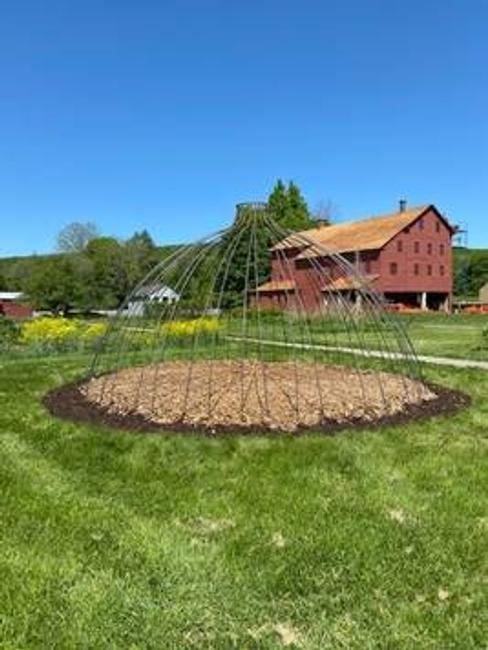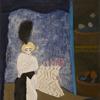Leading Asian Artists Create New Works Within Hancock Shaker Village
- June 01, 2022 12:48


In its first major exhibition on contemporary Asian art, A Spirit of Gift, A Place of Sharing is now on view at Hancock Shaker Village in Pittsfield, Mass., through November 14, 2022. This immersive, site-specific exhibition features three acclaimed Asian artists: Yusuke Asai of Japan, Pinaree Sanpitak of Thailand,and Kimsooja of South Korea.
In A Spirit of Gift, A Place of Sharing, Asai, Sanpiak, and Kimsooja focus on the spiritual connection to Shakers, and have approached their art and this campus-wide show as a gift. Although they come from cultures that are distinct both from each other and from the Shakers, they all share an integration of the spiritual and the physical in their work, as well as communal ideals. Their unique interpretations of the Shaker spirit encourage us to emerge with a new appreciation and understanding of the Shakers, and perhaps of ourselves. A gift, to share.

Inside the Poultry House, Japanese artist Yusuke Asai is creating a mural painting using 17 kinds of soil and rocks collected from the grounds of Hancock Shaker Village and its vicinity. Like the Shakers – who built the Round Stone Barn from rocks they quarried on the southern portion of the land, and who painted the trim an ochre yellow using a vein of ochre that they found in those very stones – he works with what is on the land.
His work evokes dreams, as "dreams are the wells of imagination, giving adults and children—and perhaps even animals—creativity, even if we might forget everything once we wake up." In Japan it is believed that the soul resides in all things animate and inanimate, so integrated into his installation Asai incorporates Shaker furniture and gift drawings to listen to their voices.
For the opening, Asai led a workshop, “Soil Searching,” making soil pigment paintings drawing inspiration from the artist’s imaginative creatures as well as the Shaker “gift” drawings. Participants’ soil-colored drawings became contemporary artistic versions of gift drawings to be exchanged with those done by other participants.
One of the leading and most respected feminist artists in Southeast Asia, Pinaree Sanpitak finds her ideal in the utopian society of the Shakers, where women held equal social standing to men. The Brick Dwelling and the land surrounding it are the primary impetus for Sanpitak’s site-specific work, both indoors and outdoors. Admiring the spirit of the Shakers—simple, joyous, nurturing, sustaining one another through land, work, and community -- Sanpitak’s artistic practice is a contemporary model of sustenance that extends to the land. You’ll see on the lawn a group of three steel sculptures she's made in collaboration with a local blacksmith and our gardeners. Beautiful art forms, these stupas also serve to grow both Berkshire and Thai herbs and vegetables on the trellis-like structures.

Sanpitak is working with the Hancock Shaker Village chef to create dishes at Bimi’s Café using the farm's produce as part of an ongoing global collaborative art-and-food project using Sanpitak’s stupa-shaped cooking molds and crockery. It has thus far taken place in 12 countries and 20 cities around the world. Visitors can enjoy the special menu available at Bimi’s Café through November.
Kimsooja (who was born in S Korea and lives in Seoul, Paris, and New York), is creating new work in the Round Stone Barn and the Laundry & Machine Shop. An ongoing theme of Kimsooja’s work is textiles and the human labors related to it -- sewing, weaving, and threading. These activities become a metaphor for connecting disparate places and transcending conflicts. In A Spirit of Gift, A Place of Sharing, Kimsooja creates new works that follow the Shaker story of migration from Europe, settlement, and the building of their own lifestyle. Within the Laundry & Machine Shop, Kimsooja studies the play of natural light in the building as well as its history as a room in which Sisters did laundry. She’s chosen Shaker linens from the museum collection, which she’s hanging from clotheslines in the washroom while the ethereal light she’s created in the ironing room highlights the spiritual importance of seemingly mundane work, offering an ode to Mother Ann Lee’s philosophy of “hands to work, hearts to God.”

PUBLICATION: A full-color catalog of the exhibition will be published with essays by Director Jennifer Trainer Thompson, and curators Miwako Tezuka, and Linda Johnson.





















